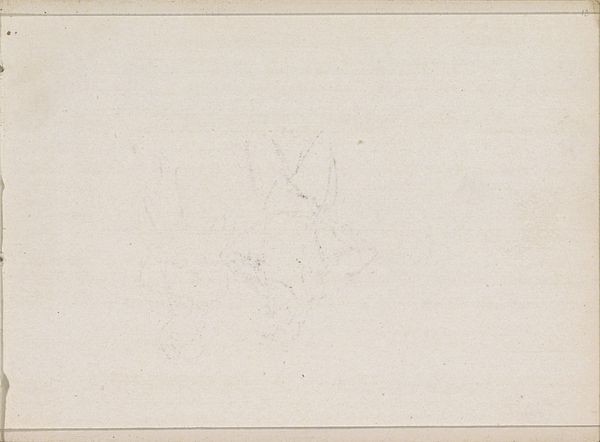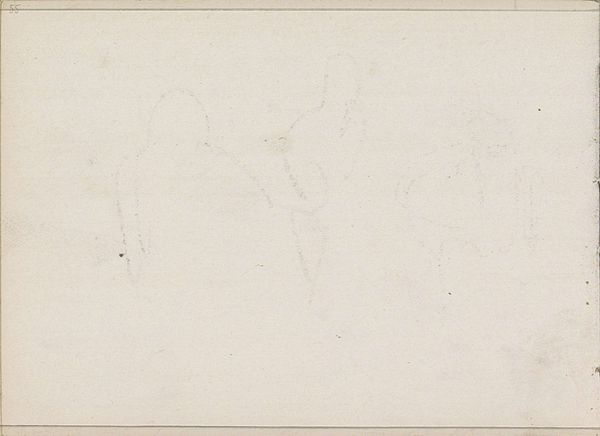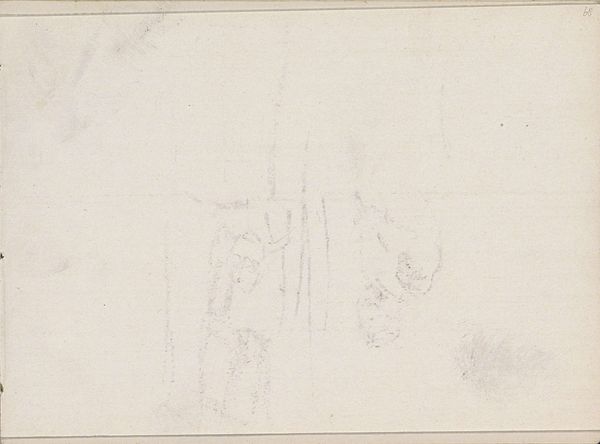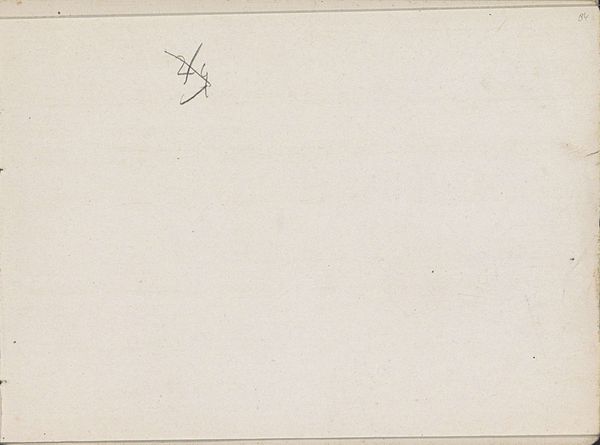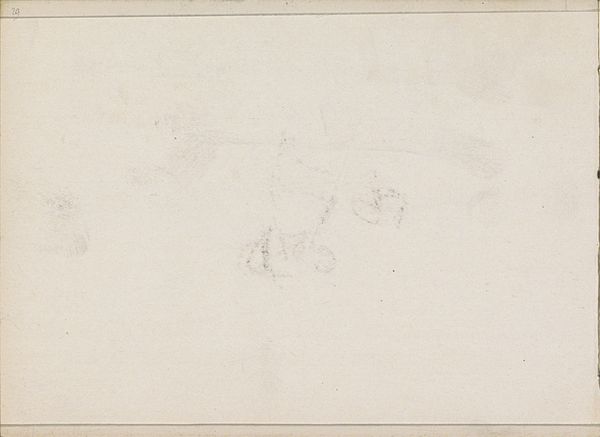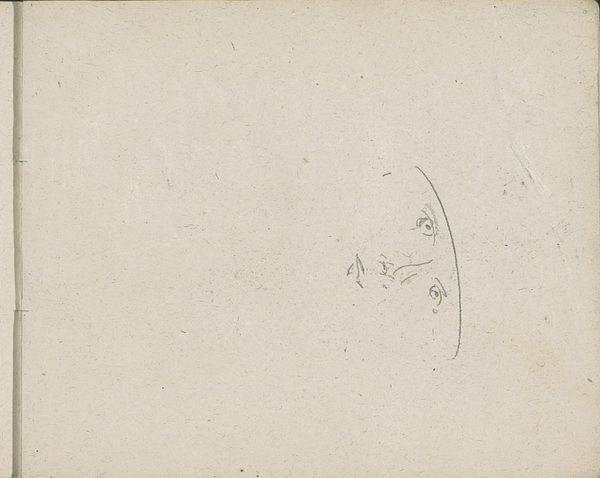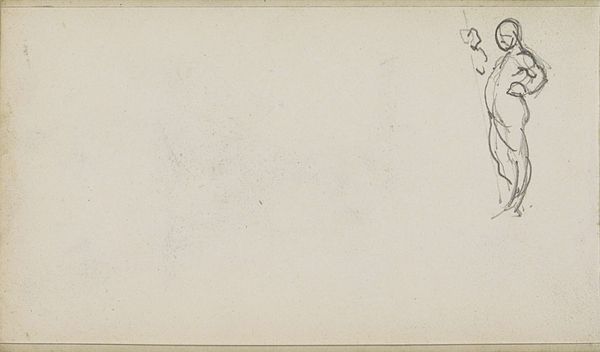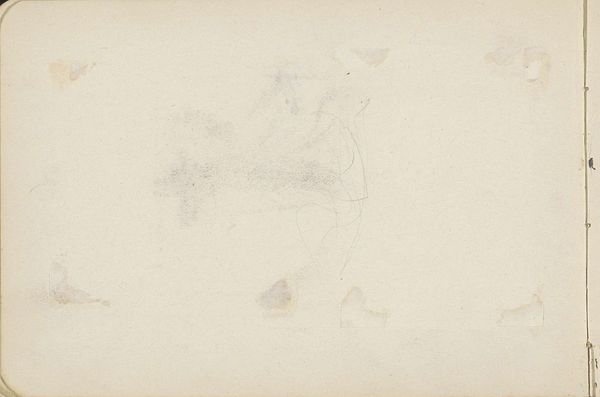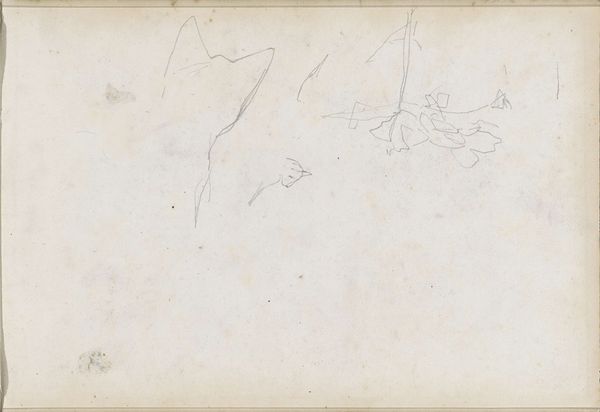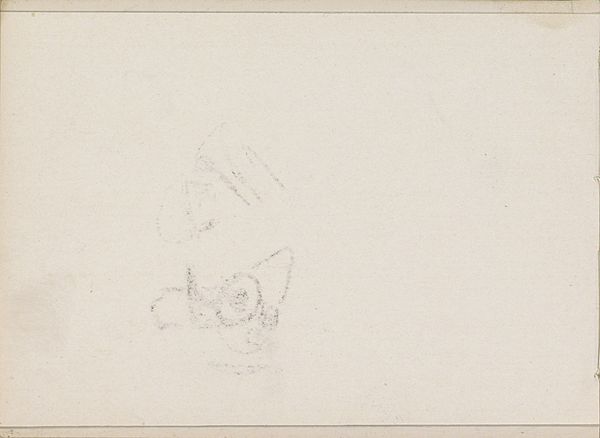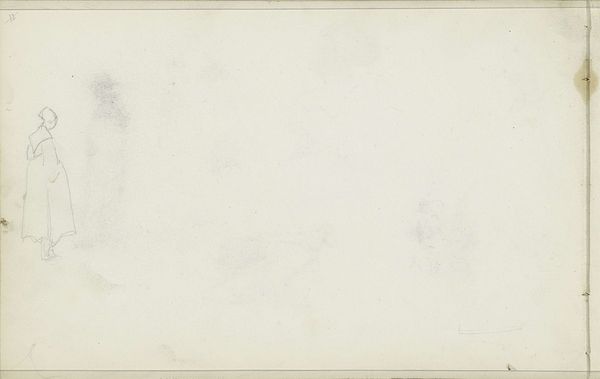
Copyright: Rijks Museum: Open Domain
Curator: This pencil drawing, aptly named "Abklatsch van de krijttekening op pagina 25," translates to "Rubbing of the Chalk Drawing on Page 25." It comes to us from the sketchbook of Isaac Israels, created sometime between 1875 and 1934. What's your initial impression? Editor: Austere. The aged paper gives it a ghostly presence, and the sketched elements feel more like afterthoughts, wisps of an idea. It almost seems to depict erasure as much as it depicts creation. Curator: Precisely! Think about Israels’ process here. It's a copy, a secondary image made from another. What does it tell us about artistic labor, about the value of an original versus a reproduction? Is this, in its way, commenting on the rise of mass production? Editor: Potentially. But how does that feed into the broader narrative around Impressionism, the artistic movement with which we identify Israels? Did its social circle value sketching and the sharing of ideas as much as highly-finished artworks? What purpose did this book serve? Was it solely personal, or shown around? Curator: Those are vital questions to contextualize its function within artistic circles of the time. Focusing on the work itself, however, notice how the economy of line belies its "rubbing" nature. It has an ephemeral, here-one-moment quality. Also, how do we perceive the labor invested in sketching? A fully realized painting of the day usually shows off hard labor while this can come across as trivial in comparison, even though the landscape depiction would be hard in a studio set up. Editor: The Rijksmuseum displaying it adds another layer, though. A "sketchbook drawing" elevated to the status of a publicly viewable object. How did it land in the museum collection, and what criteria deemed it worthy? This small work participates in how society views art itself. Curator: That elevation forces us to reconsider its initial 'throwaway' nature, doesn’t it? Seeing it here forces us to think not only of Israels and his choices with medium but about larger questions of art history, display, and access, how objects achieve value. Editor: It's a poignant reminder that even the smallest sketches can spark grand conversations. Curator: Yes, from the physical act of Israels laying pencil on paper, we have arrived at social commentary, questioning and broadening how museums make artwork available, thus giving a unique dimension to artistic vision and artistic labor.
Comments
No comments
Be the first to comment and join the conversation on the ultimate creative platform.
